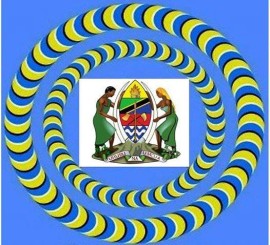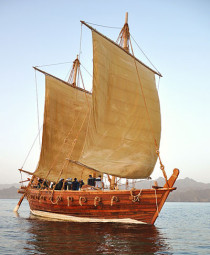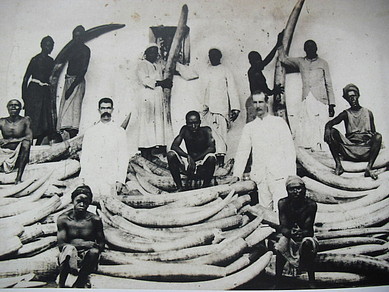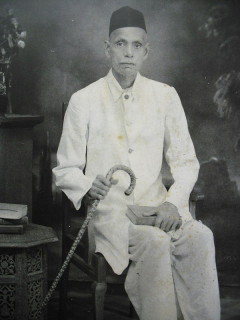The Lake Region
The intelligence lately received that the Uganda Railway had been completed from Mombasa to the Victoria Nyanza, that the stupendous engineering difficulties had been conquered, and that the day was within sight when “through bookings to the Heart of Africa” would be possible, made a direct appeal to the imagination of Englishmen. The veil was being torn from the Dark Continent, it is true, but the romance was still there. What a triumph to carry the line of steel, as the agency of the “ Pax Britannica,” through a region recently given up to the raiding of Arab slavers, peopled by the Masai and other savage tribesmen. pestilent with torrential rains and the malaria of swamps, rugged with mountain peaks, and the deep and broken defiles of the Erytrean rift - valley, and infested with pythons, cobras, puff adders, and other reptiles innumerable! The plate laying began on August 5th 1896, but a survey had been made in 1892, and plans had been prepared some time before the railway was undertaken. Within less than five years and n-half, the line has been pushed forward for a distance of 572 miles from the Indian Ocean, across irregular plains covered with dense Lush, then scaling the mountain escarpments, its way hewn out often from the solid rock, sometimes carried across deep ravines, or driven through jungles where wild beasts were for the first time roused from their ancient lairs. The undertaking was organised under the authority of the Secretary of State for Foreign Affairs.
The original cost was estimated at £1,755,000 or at the rate of about £2,700per mile, but, with the associated operations which have become necessary, the expenditure incurred amounted to £4,115,002 up to the end of the last financial year, and including the estimate for the current year to £4.815,602, while the total estimated cost is nearly half a million more. It is a great outlay, but few will think it too much for the development of one of the most fruitful regions in Africa. We published an article on December 29, 1900, describing and illustrating the work up to that date, and gave a brief account of the character of the country, and of the engineering work from the great railway bridge across the Macupa, between Mombasa Island and the mainland, as far as the Salt Lake of Nakuru, as well as of the passage of the great Kikuyu escarpment, at an altitude of nearly 8,ooo-ft., being the highest point of the line, with the exception of the Man summit, which is 500-ft. higher. The vast escarpment of the deep Rift-valley belongs to the lofty range, and commands a view of the snow-clad peaks of Kenia and Kilimanjaro. Immense difficulties were overcome, but the great mountain world of the engineers being over, it was comparatively easy to carry the line down into the basin of the Victoria Nvanza. On March 31 last the rail-head was at mile 483, while the earthworks were completed to mile 500. The line had been opened for goods traffic to mile 475miles on January 20, and 01st February for passengers to mile 448. The expeditions sent into the Nandi Region between the rail-head and the lake had quelled the opposition of the tribesmen, who had carried off the telegraph line and attacked passing caravans, and no delay occurred through their turbulence.
Our large illustration shows some of the easier country through which the line has been carried, while the interesting picture taken at the 476th mile, showing the building of an iron trestle bridge across a deep and thickly wooded ravine, indicates some of the difficulties which have been overcome.
These are also suggested by the rocky cutting which is illustrated at mile 504. The line reached the Victoria Nyanza with less difficulty, and the station at Port Florence is destined to play a large part in the future development of South Africa. The greatest credit for the successful conclusion of the immense undertaking is due to Mr. G. Whitehouse, the chief engineer, and to all who have been associated with him.
The work does not, of course, end with the plate laying to the Victoria Nyanza shore. The lake itself has been surveyed by Commander Whitehouse, R.N., and many corrections have been made in the maps. Already the railway has caused a considerable increase in the commerce of the region.
The Lake RegIon
MUMIAS, PORT VICTORIA, KISUMU
The chief stopping-place for rest and re-supply favoured by caravans passing through western Kenya a century ago was Kwa Sundu. It was close to a ford across the Nzoia River. It was also the capital
of the kingdom of Wanga, whose ruling family counts up to eighteen Nabongos and traces its history back to the fifteenth century. The Nabongo who had recently acceded to the throne when Joseph
Thomson arrived in 1883 was Mumia.‘The present chief,’ Thomson wrote, ‘is a mild and pleasant young man, and we were soon on the best of terms ... He enjoyed enormously examining my photographs. He
became so enthusiastic over the charms of one lady ... that he gave me a large order for a bevy after that pattern at two tusks of ivory a head. I said I would do what I could for
him.’
In due course the Imperial British East Africa Company established a post at Kwa Sundu, generally known as Mumia’s, and this was taken over by the Government when the Company withdrew from Uganda in 1893. The man in charge there from February ; 1895 proved to be one of the more able of the Nyanza administrators. This was C. A. Hobley, who had joined the Company in 1890 as a geologist, and had spent most of his time at the coast on survey work, water supplies and road making. He had transferred to Uganda Government service in 1894. At Mumias his responsibilities ran from the Sio River to Eldama Ravine and from south of Kisumu to Mount Elgon. Over this area he was expected inter alia to reduce raiding, to foster the beginnings of trade and to keep open the Uganda Road.
During the Nineties Port Victoria, near the mouth of the Nzoia River, appeared to be the place of the future. The Macdonald railway survey of 1892-3 had recommended that the line of the Uganda Railway should run down the Nzoia Valley to this terminus on the lake. Within three years Port Victoria became the western end of Sclater’s Road. Stores were accumulated and plans laid for harbour development. Then came the discovery by the Blackett Survey of 1898 of the present rail route from Nakuru to Ogowe to Ogowe Bay down the Nyando Valley. The decision to use Blackett’s route meant that Port Victoria would remain a fishing village, but it was not abandoned overnight. Lieutenant Whitehouse, R.N., the brother of the railway’s Chief Engineer, carried out the hydrographical survey of northern Lake Victoria from there in 1898-9, and a British garrison remained for some time.
Once the railway alignment was decided upon developments on the Winam Gulf followed quite rapidly. Orders were given by Colonel Ternan that the provincial
headquarters should be gradually moved from Mumias to Port Florence, the move to begin in May 1899. Construction of s.s. William Mackinnon, a larger vessel than the Vice-Admiral, was pressed forward;
the first loads of this ship had been carried up as early as 1895, but some parts had been lost by raid or accident. Now the parts and replacements were assembled at Port Florence and the vessel was
launched in 1900. Hobley as Provincial Commissioner moved into the township in May of that year.
Port Florence was originally at Old Kisumu, on the north side of Ogowe Bay near the present golf course.
However, the railway surveyors decided that the station and the deep water berths should be built on the south side of the bay, and the railway living quarters on the cooler and healthier ridge above
it. The line was completed in 1901. The Administration decided that the railway’s choice of residential area was a good one. and a general move to the site of modern Kisumu took place in
1902.
When in 1907 Winston Churchill visited Kisumu as Under-Secretary of State for the Colonies he found the township ‘pretty’. ‘Unluckily,’ he goes on, ‘it
is unhealthy, for the climate is depressing and the sewerage accumulates in the tideless and shallow inlet. Some day one of two things will happen: either the waters of the Victoria Nyanza will be
raised by a dam across the Ripon Falls and Kavirondo Bay will be proportionately deepened and cleansed, or the railway will be deflected and prolonged to its natural terminus on the deep waters of
the lake at Port Victoria.’
By the time of Churchill’s visit John Ainsworth had become Provincial Commissioner. Like Hobley, Ainsworth was a stalwart from
I.B.E.A. Company days. He had first been in charge at Machakos, and had then presided over the early growth of Nairobi. He was still in charge of Nyanza Province at the outbreak of the First World
War.
It was clear that Kisumu’s long-term well-being depended on its position as the natural collecting point for the produce of western
Kenya and its distribution centre for piece goods and equipment. But first roads had to be made, and the people had to generate purchasing power by producing a surplus for sale. Meanwhile Kisumu
continued as a railway town and lake port with a steadily growing fleet, s.s. Winifred had been launched in 1902 and s.s. Sybil in 1904. They were joined by s.s. Clement Hill and in 1908 by s.s.
Nyanza.
Non-Government enterprise was contributing to economic development in the west before the First World War. There was an Indian settlement scheme near Kibos. The bazaar in Kisumu was yielding considerable revenue from traders’ licences. European farms were being developed at Muhoroni and Koru and in the Songhor Valley. Richard Gethin had made a start on his trading and transport ventures in Kisii. But the outbreak of war interrupted progress. There were fears for the safety of Kisumu, and some of the defensive works constructed along the lake shore in 1914 could still be seen below the Kisumu Hotel until they were flooded by the rise of lake level after the Owen Falls dam was built.
When the war was over Kisumu enjoyed a boom period, but it soon faded and the town faced a time of economic stringency. This became worse in 1926 when the direct railway line was pushed through from Nakuru to Kampala and a rail link was built from Tabora to Mwanza, thus curtailing Kisumu’s lake traffic.
The discovery of gold at Kakamega in 1931 was an important factor in Kisumu economic recovery. Gold had been found and mined in South Nyanza in the Twenties, but it was the opening up of the Kakamega Goldfield that made the difference, giving rise to a considerable demand for machinery and mining supplies as well as stimulating the transport and grocery trades. Thus while the highlands were suffering from the worst effects of the slump Kisumu enjoyed a period of prosperity that continued until 1939.
from John Riddoch’s collection (The name ‘Kavirondo’ is used in place of the modern ‘Luo’.)
Steamboats on the Victoria Nyanza
Steamboats on the Victoria Nyanza
It is dogged that does it" might be applied to some of the work of the Foreign Office in East Central Africa. Under local circumstances of the greatest difficulty' the Foreign Offices has
persisted for years in endeavouring to place and maintain steamboats, under the charge of the Uganda Administration, on Lake Victoria Nyanza........
Click below on photo to continue......
The IBEA Company started building a road from Mombasa, and Captain Sclater supervised its completion to Lake Victoria in 1896.
In October 1905 the British launched their fifth and largest expedition against the Nandi and killed 600 of their warriors by November, ending ten years of violence as the Nandi withdrew to a reserve away from the railway.
Eliot had reserved all land from Kiu to Fort Ternan for white settlers, and in 1907 the Colonial Secretary Elgin pledged that the area would be reserved for Europeans. The railway cost taxpayers £7,909,294 but began turning a profit in 1905.
Between 1908 and 1912 settlers complained about a lack of African labor, and they demanded the Government increase taxes on Africans to force them to work. A Poll Tax was added to the Hut Tax, and pressure was put on Africans to leave their homes and work on European estates. Since 1907 John Ainsworth as Commissioner of Nyanza Province had been encouraging Africans to grow their own crops, and by 1914 Nyanza was the leading exporter, growing much corn (maize) and simsim (sesame). Many Indians settled in Kenya and maintained their culture, language, and religion as they excelled in crafts, trade, and civil service. Europeans, some of whom were from South Africa, began to demand residential segregation of Asians as well as of Africans. Ewart Grogan had flogged Africans in 1907. Settlers got the right to all-European juries, and for many years no jury convicted a European of murdering an African.
Edward Northey arrived in January 1919 and became the first governor of Kenya when it was declared a colony in 1920. He ordered the start of African registration, and in October 1919 he authorized officials to assist with labor recruiting for private employers. Northey also implemented the Soldier Settler plan by helping European veterans get land in Kenya on easy terms. Taxes on Africans were raised during and after the war, but Europeans had low taxes. The state even helped employers reduce their wages to Africans. The Indians in Kenya outnumbered the Europeans, but they were not allowed to vote or get land in the “white highlands.” They demanded the vote, free immigration, and an end to segregation. However, the Convention of Associations demanded restricted Asian immigration, only two Asians on the Legislative Council, and residential segregation.
The Catholics were restricted to Buddu province, and the Muslims were given three small counties. Gerald Portal was appointed commissioner. He arrived at Kampala on March 17th 1893 and raised the British flag on April 1. The British Government began to pay the Company for the administration.
The British formally declared the Uganda Protectorate in June 1894, and the East Africa Protectorate was proclaimed in July 1895.
Commissioner Ernest Berkeley (1895-99) arrived on December 12 and got the Kabaka and chiefs to accept the Uganda-Usoga Agreement by which the Ganda renounced their claims in Busoga, which was incorporated into the Protectorate.
The Christian Missionary Society began starting bush schools in 1895. After 1900 they had three or four boarding schools to educate the African elite. Bishop Tucker ordained six Ganda deacons in 1893 and three priests by 1896. By 1914 the Anglican diocese had 33 African priests.
Kisumu is the third largest city in Kenya. What factors led to the emergence of Kisumu as one of the most important cities in Kenya as well as in the Great Lakes region? We argue that the Kenya-Uganda Railway helped make Kisumu one of the most important cities in Kenya and the Great Lakes region.
https://macleki.org/stories/the-kisumu-port/












































